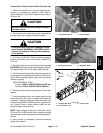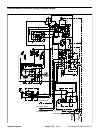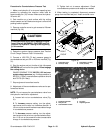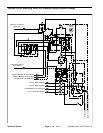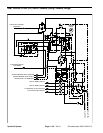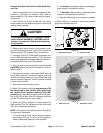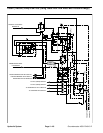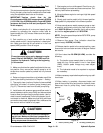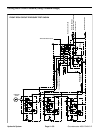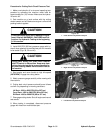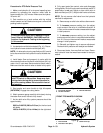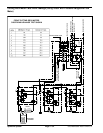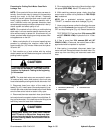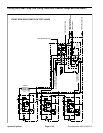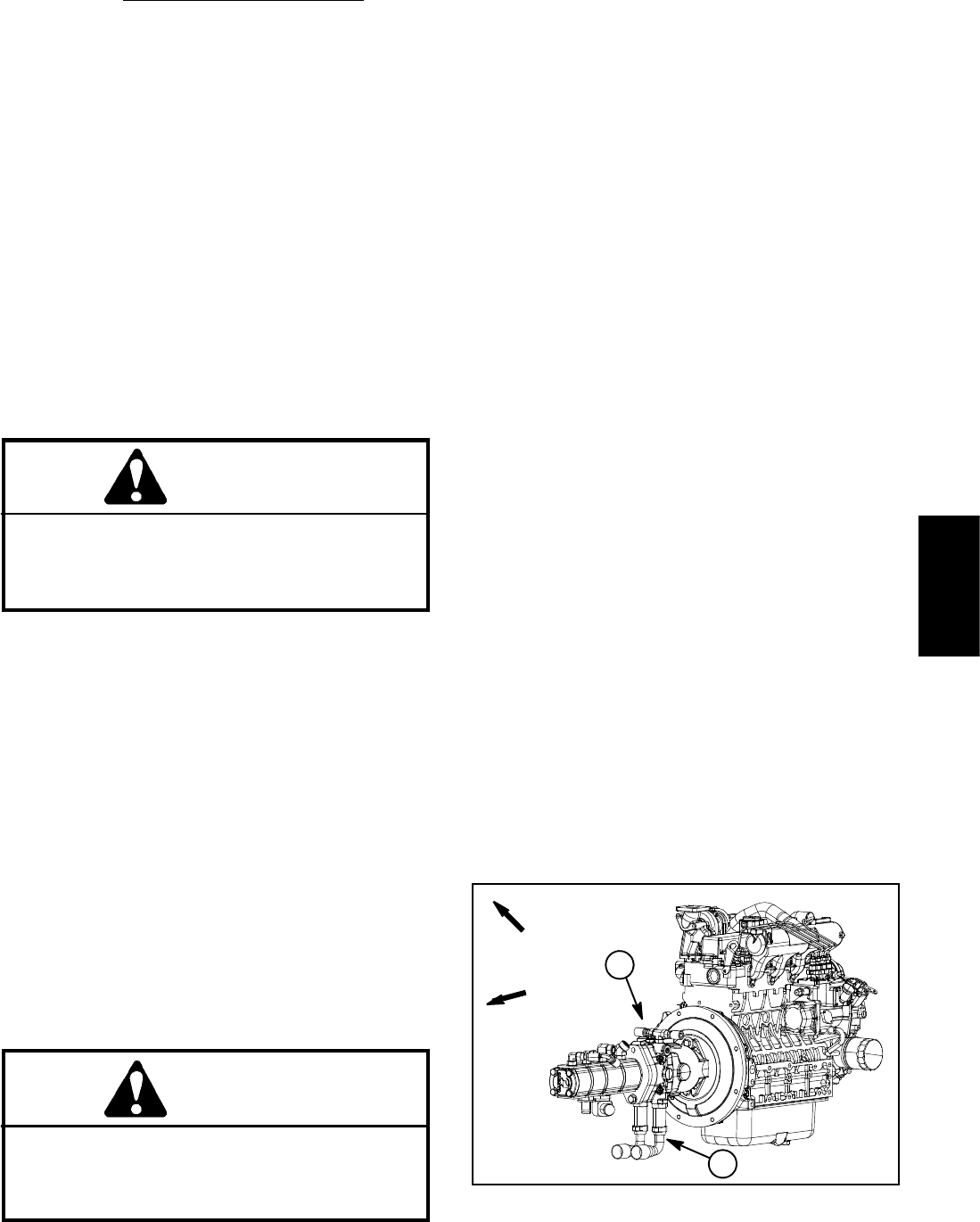
Groundsmaster 4000--D/4010--D Hydraulic SystemPage 4 -- 49
Procedure for Piston (Traction) Pump Flow
Test
This test measures piston (traction) pump output (flow).
During this test, pump load is created at the flow meter
using the adjustable load valve on the tester.
IMPORTANT: Traction circuit flow for the
Groundsmaster4000/4010 is approximately 30 GPM
(113.5LPM). Use 40 GPM Hydraulic Tester #AT40002
(pressure and flow) for this test (see Special Tools
in this chapter).
1. Make sure hydraulic oil is at normal operating tem-
perature by operating the machine under load for
approximately ten (10) minutes. Make sure the hydrau-
lic tank is full.
2. Park machine on a level surface with the cutting
decks raised and off. Latch wing decks in raised posi-
tion. Make sure that the Hi/Low switch is in the Low
speed (4WD) position. Shut off engine.
CAUTION
Prevent personal injury and/or damage to equip-
ment. Read all WARNINGS, CAUTIONS and Pre-
cautions for Hydraulic Testing at the beginning
of this section.
3. Make sure that traction pedal is adjusted to the neu-
tral position. Also, ensure that traction pump is at full
stroke when traction pedal is pushed into fully forward
position.
4. Raise and support machine so all wheels are off the
ground (see Jacking Instructions in Chapter 1 -- Safety).
5. Thoroughly clean junction of hydraulic hose and left
side fitting on bottom of traction pump (forward port)
(Fig. 37). Disconnect hose from left side pump fitting.
6. Install tester with pressure gauge and flow meter in
series between traction pump fitting and disconnected
hosetoallowflowfromtractionpumptotester.Usehy-
draulichosekit( see Special Toolsinthischapter)tocon-
nect tester to machine. Make sure that fitting and hose
connections are properlytightened. Also, make sure the
flow control valve on tester is fully open.
CAUTION
All wheels willbe off the ground androtating dur-
ing this test. Make sure machine is supported so
it will not move and accidentally fall to prevent in-
juring anyone near the machine.
7. Start engine and run at idle speed. Check for any hy-
draulic leakage from tester and hose connections. Cor-
rect any leaks before proceeding.
8. Move throttle so engine is running at high idle speed
(2870 RPM).
9. Slowly push traction pedal to fully forward position.
Keep pedal fully depressed in the forward position.
10.Have second person watch pressure gauge on test-
er carefully while slowly closing the flow control valve
until 1000 PSI (69 bar) is obtained. Verify with a photo-
tac that the engine speed is still 2870 RPM.
NOTE: If engine speed drops below 2870 RPM, pump
flow will decrease.
11.Observe flow gauge. Flow indication should be
approximately 29 G P M (110 L PM).
12.Release traction pedal to the neutral position, open
flow control valve on tester and shut off engine. Record
test results.
13.If flow is less than 26 GPM (98 LPM), consider the
following:
A. The traction pump swash plate is not being ro-
tated fully (e.g. Hi/Low switch is not in Low speed
(4WD), traction pedal linkage may need adjust-
ment).
B. The hydrostat needs to be repaired or replaced
as necessary.
14.Make necessary repairs before performing any addi-
tional tests.
15.When testing is complete, disconnect tester and
hose kit from pump fitting and machine hydraulic hose.
Reconnect hose to pump fitting. Lower machine to
ground.
1. Piston (traction) pump 2. LH fitting (forward port)
Figure 37
FRONT
RIGHT
1
2
Hydraulic
System



